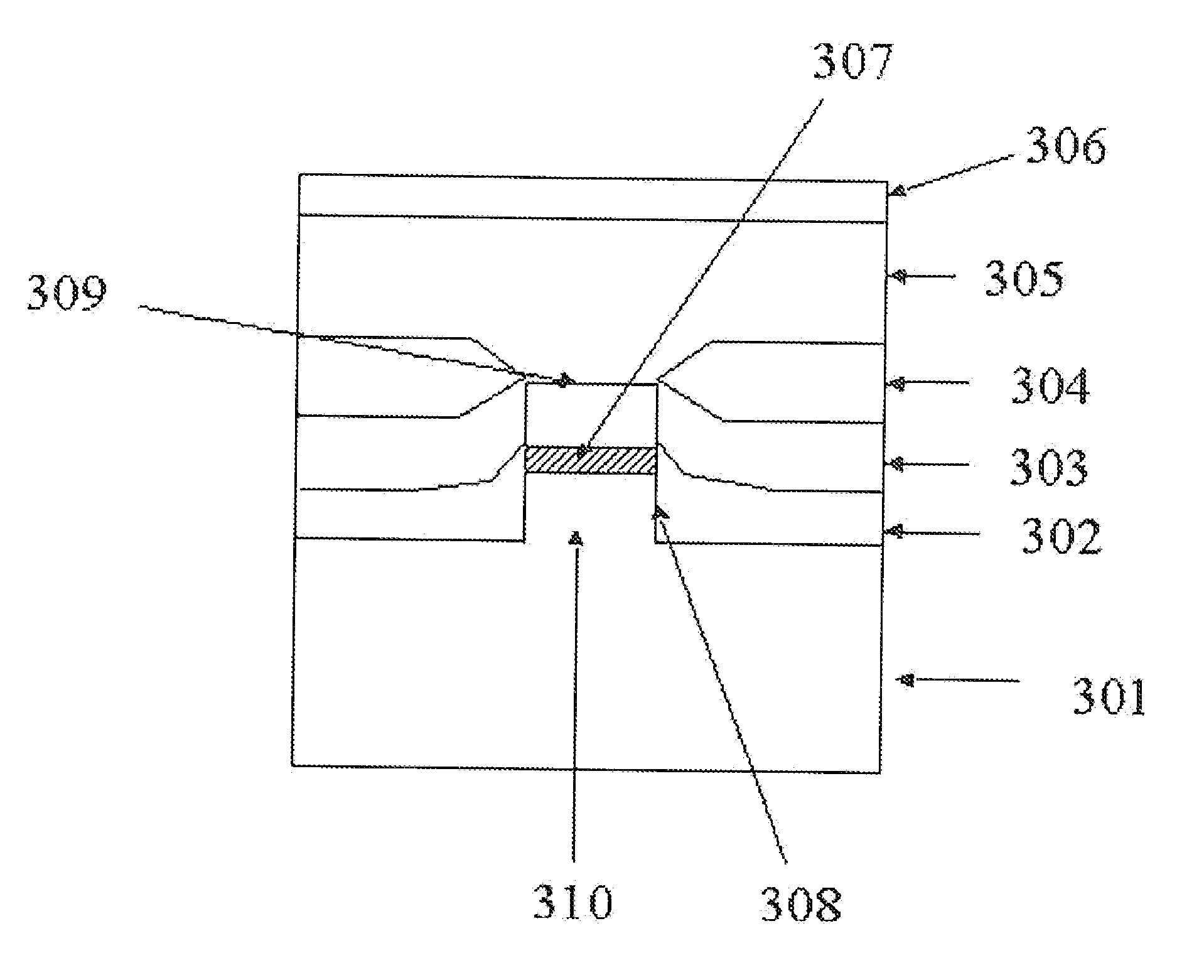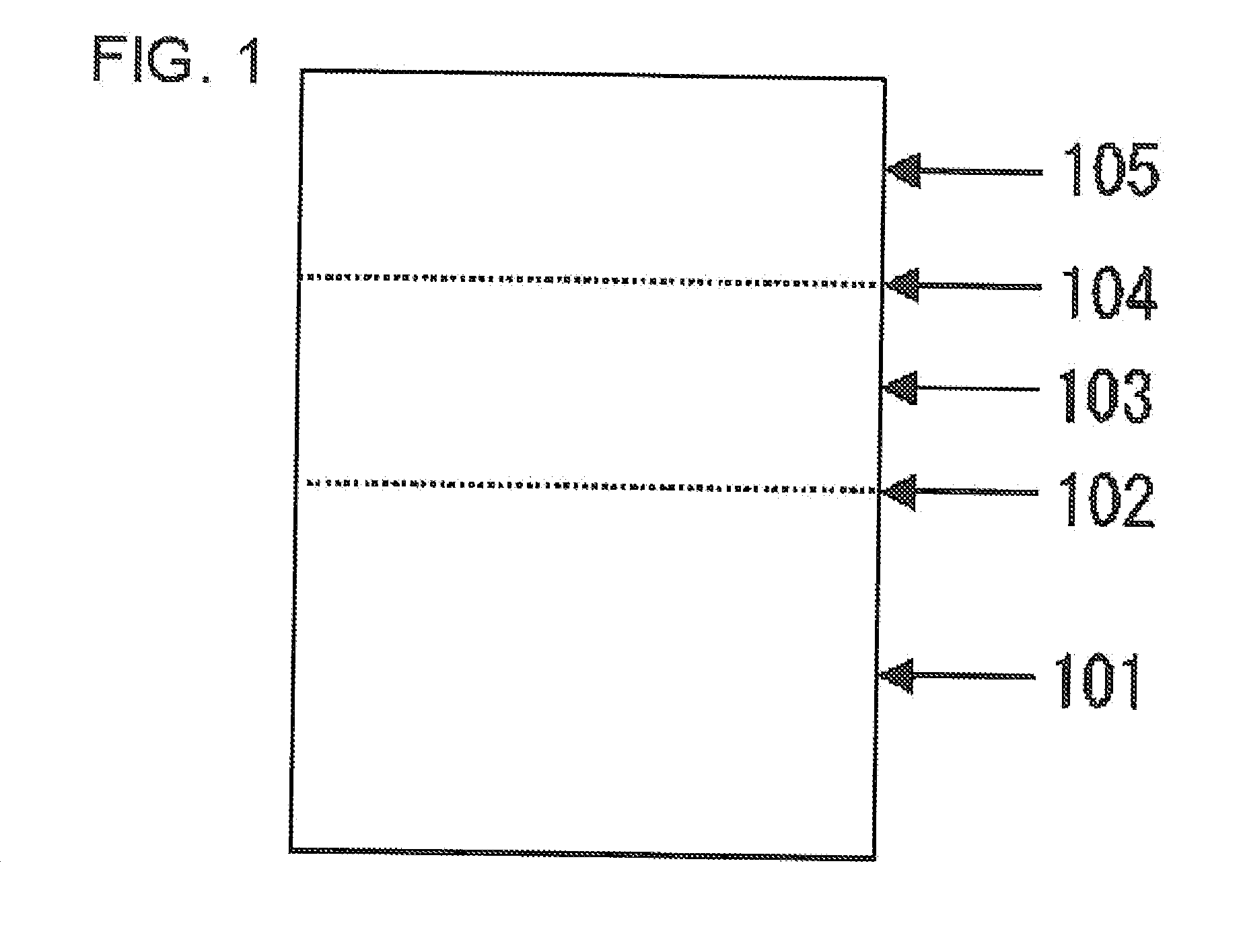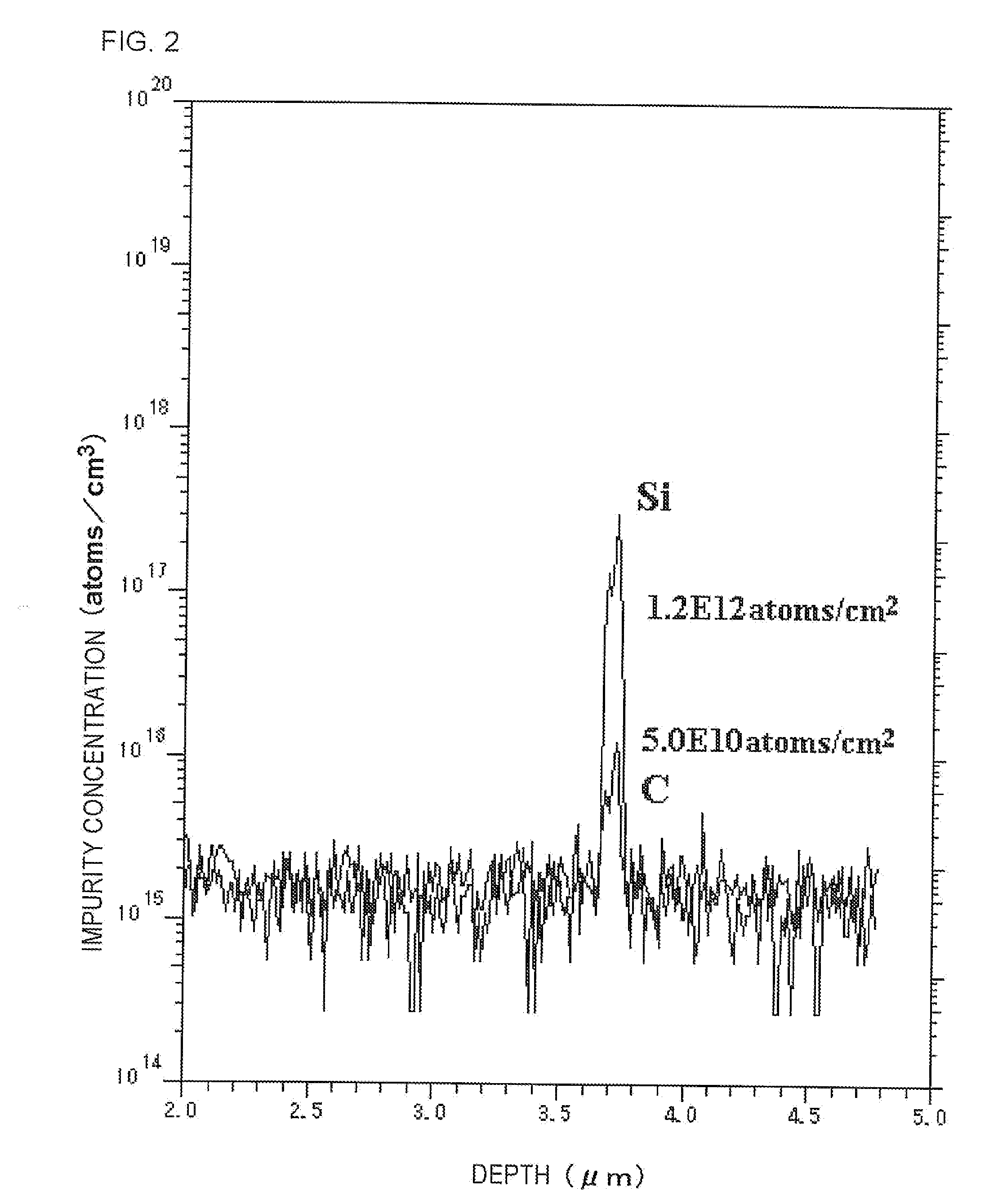Optical semiconductor device with a concentration of residual silicon
a technology of optical semiconductor devices and residual si, which is applied in the direction of semiconductor devices, chemistry apparatus and processes, after-treatment, etc., can solve the problems of inability to eliminate residual si of a regrowth interface slow etching rate, and inability to remove residual si in a straightforward manner, so as to improve the performance of the semiconductor device, the effect of stable and reproducible elimination of impurity contamination and physical damage, and the shape chang
- Summary
- Abstract
- Description
- Claims
- Application Information
AI Technical Summary
Benefits of technology
Problems solved by technology
Method used
Image
Examples
first embodiment
[0096]This embodiment described a residual impurity removal for a growth interface in the case of re-growing InP on InP using MOVPE techniques. Here, t-butyl chloride (TBCl: (CH3)3CCl) is used as the source material having an etching action, and trimethylindium (TMIn) and phosphine (PH3) are used as the crystal growth source material. As shown in FIG. 1, after an undoped InP layer 103 is grown to 1.0 μm as a growth layer for the first time using MOVPE techniques under a low pressure (60 Torr) on the Sn doped {001} InP substrate 101, the wafer is temporarily removed from an MOVPE reactor and is exposed to the atmosphere for twelve hours. Wet chemical treatment etc. is not implemented. After this, the wafer is again moved back into the MOVPE reactor, and an undoped InP layer 105 is regrown to 0.5 μm as the second growth layer.
[0097]At the second growth interface 104 directly before the start of the second growth, in the MOVPE reactor, TBCl, TMIn and PH3 are supplied to the surface of ...
second embodiment
[0102]In this embodiment, the present invention is applied to an InP family semiconductor laser device. In this embodiment, after forming multi-layer films of a semiconductor taking an active layer as an uppermost layer, part of the surface of the active layer is covered with a mask, portions on both sides of the mask are removed by etching, and a mesa stripe is provided. At this stage, after implementing cleaning treatment of the present invention, semiconductor layers are buried at both sides of the mesa. After this, the surface of the mesa is subjected to the cleaning treatment of the present invention and a semiconductor layer of an upper layer is formed. The following is a description with reference to FIG. 10.
[0103]First, using a normal crystal growth process, a InGaAsP / InGaAsP quantum well 307 constituting an active layer with a double hetero structure is made on an n-type InP substrate 301, and a 2 μm mesa stripe 310 is formed to a depth in the order of 2 μm by dry etching u...
third embodiment
[0107]In this embodiment, the semiconductor multi-layer structure is made in the same way as for the first embodiment with the exception that the conditions for cleaning treatment are changed, and the concentration of residual impurities such as C, O and Si at the second growth interface 104 are measured. The conditions for the cleaning treatment are shown in table 1. A description is given in the following of each item in “treatment conditions” of table 1.
(i) Gas Species
[0108]Here, t-butyl chloride (TBCl: (CH3)3CCl), and bis(dimethylamino) phosphine chloride (BDMAPCl: [N(CH3)2]2PCl) are used.
(ii) Gas Flow Rate
[0109]Amount of gas supplied to the MOVPE reactor is shown.
(iii) Etching Rate
[0110]The etching rate in the case of only supplying etching gas at the flow rates shown in the table is shown. This value is obtained through pre-testing.
(iv) Growth Rate
[0111]The growth rate in the case of only supplying growth gas at the flow rates shown in the table is shown. This value is obtaine...
PUM
| Property | Measurement | Unit |
|---|---|---|
| thickness | aaaaa | aaaaa |
| temperature | aaaaa | aaaaa |
| thickness index | aaaaa | aaaaa |
Abstract
Description
Claims
Application Information
 Login to View More
Login to View More - R&D
- Intellectual Property
- Life Sciences
- Materials
- Tech Scout
- Unparalleled Data Quality
- Higher Quality Content
- 60% Fewer Hallucinations
Browse by: Latest US Patents, China's latest patents, Technical Efficacy Thesaurus, Application Domain, Technology Topic, Popular Technical Reports.
© 2025 PatSnap. All rights reserved.Legal|Privacy policy|Modern Slavery Act Transparency Statement|Sitemap|About US| Contact US: help@patsnap.com



